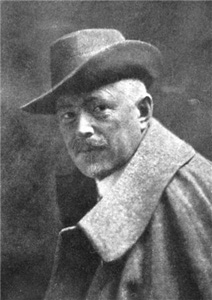Persons, originating from Poland
Władysław Horodecki
 Born: June 4 (O.S. May 23), 1863 in Sholudky, Podolia Governorate
Born: June 4 (O.S. May 23), 1863 in Sholudky, Podolia GovernorateDied: January 3, 1930 in Tehran, Iran
Name in Ukrainian: Владислав Владиславович
He was a renowned Polish architect and big-game hunter, best known for his immense contributions in Kiev urban development with buildings such as the House with Chimaeras, the St. Nicholas Roman Catholic Cathedral, the Karaite Kenesa, the National Art Museum of Ukraine, that transformed once a provincial city of the Russian Empire into the European capital of Ukraine. In Ukraine Horodecki often worked along with a sculptor from Milan, Emilio Sala, who was an instructor at the Kiev City College. After 1890 Horodecki moved to Kiev where he lived for almost 30 years. As Poland regained its independence and Russia, including Kiev, fell under the thrall of Bolshevism, he emigrated to Warsaw. In Poland Horodecki headed an American Project Bureau "Henry Ulan & Co". His designs that were built include for instance a water tower and trade rows in Piotrków Trybunalski (today in Lodz Voivodeship), a meat factory in Lublin, a bath house in Zgierz, and a casino building in Otwock. In 1928 on the invitation of the same company Horodecki moved to Tehran becoming a chief architect of the "Syndicate on the Design of Persian Railways". In 1930 he died and was buried at Doulab Catholic Cemetery in Tehran.
More information
Polonica stamps:
|
Ukraine 2014, 14 II |
Ukraine 2021, 04 X |